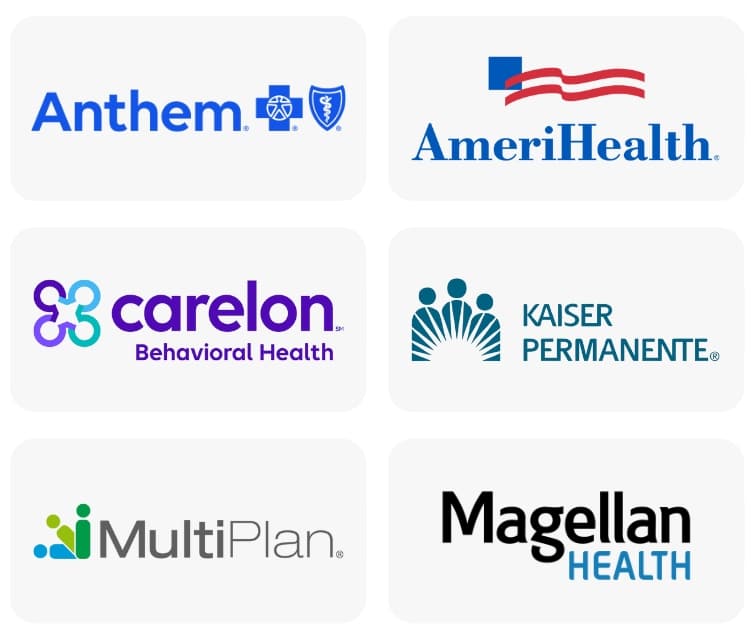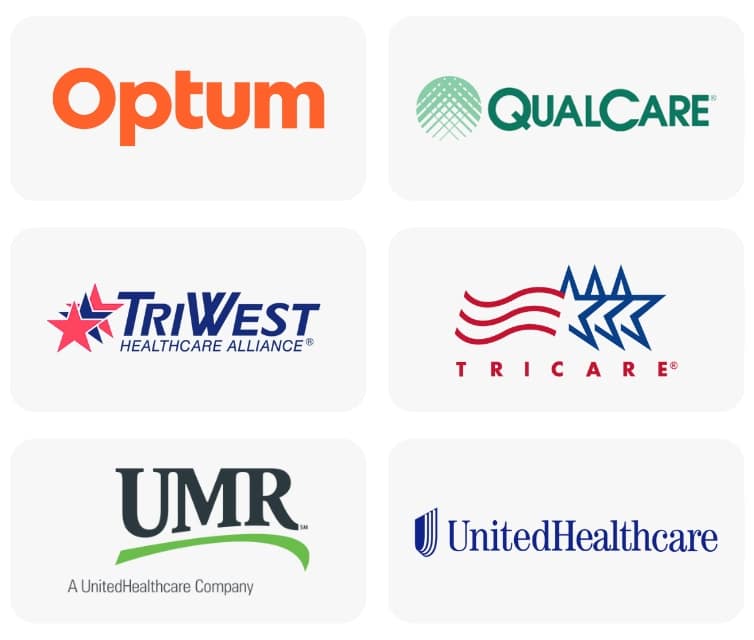The statistics surrounding drug and alcohol abuse in the United States are cause for concern. According to data from the National Center for Drug Abuse Statistics, close to 100,000 Americans die from drug overdoses each year. Opioids, a class of prescription drugs used for pain management, account for close to 68% of drug overdose deaths. Alcohol use is also problematic. A 2021 survey from the Substance Abuse and Mental Health Services Administration found that nearly 30 million Americans over the age of 12 suffered from alcohol use disorder in the past year.
Substance abuse affects everyone differently. Some may notice when casual drug or alcohol use turns into something more and take steps to curb their addiction issues. One of the most common ways people find help for addiction is through 12-step programs. These programs are peer-led and offer a safe space where anyone can share their experiences with recovery.
Twelve-step programs can be valuable to the recovery process, but they don’t offer the same level of care a professional treatment center does. Footprints to Recovery’s full continuum of care for addiction and mental health disorders is rooted in compassion and dignity for all. We offer a variety of holistic and evidence-based treatment methods for an integrated approach to recovery. Our team of addiction professionals is dedicated to providing unparalleled support, guidance, and care to those in need.
What Is a 12-Step Program?
There are different avenues you can take for addiction recovery. The most advisable method is to get help from a professional substance use disorder treatment center. Another popular option is using peer support groups to aid in the recovery process. Twelve-step programs are peer-led groups that provide support and shared experiences. They have helped many people on their journeys to end serious addiction problems. According to research, those who attended 12 step groups following treatment fared better in their recovery journeys.
As the name implies, many of these groups outline 12 traditions or steps you must take to complete the recovery process. After finishing the steps, your attitude toward substance abuse may have changed, allowing you to focus on sustained sobriety. Twelve-step program meetings provide members with safe spaces for sharing. You can also develop friendships and receive emotional support from your peers in recovery.
The main difference between a recovery center and a 12 step program is that those who oversee peer-led programs may not be licensed and certified addiction treatment counselors. Seeking treatment from a professional facility means you receive comprehensive care overseen by treatment staff. These are people who are capable of providing medically assisted treatment and more. Peer-led groups are more focused on sharing experiences and finding common ground than providing integrated treatment.
Popular 12-Step Programs
Alcoholics Anonymous (AA) is the original 12-step group. The model proved effective in treating other addictions as well, which led to the formation of many different specific addiction 12-step groups. These recovery groups can be found all over the country.
Some of the most popular 12-step groups include:
- Alcoholics Anonymous (AA)
- Narcotics Anonymous (NA)
- Gamblers Anonymous (GA)
- Food Addicts Anonymous (FAA)
- Sex Addicts Anonymous (SA)
Some groups get even more specific. While Narcotics Anonymous is a group for general drug use, there are specific groups that meet for some drugs. Those include substances like:
- Cocaine Anonymous
- Heroin Anonymous
- Crystal Meth Anonymous
- Nicotine Anonymous
The sense of community and support from others is often crucial in treatment as you can come to realize you aren’t alone on your journey to a brighter future. Research has shown that those who participate in 12-step groups have lower rates of substance use and fewer alcohol- or drug-related problems as a result. The study also found that people looking to overcome drug addictions using 12-step programs may have a more difficult time than those who seek help for alcoholism.
What Is Alcoholics Anonymous?
AA is a 12-step program offering support to people struggling with an alcohol use disorder (AUD). The program was first used by Bill Wilson and Dr. Bob Smith in 1935 in Akron, Ohio. The main premise of the group is that alcoholics are powerless in their fight against alcohol abuse. To reach lasting sobriety, you need to put your faith in a higher power and take a moral inventory of yourself.
An AA meeting is a regular weekly event with a set time and location. Many who have completed formal alcohol dependence treatment find that attending 12-step meetings like AA aids in their ability to resist the urge to drink. There’s a motivational enhancement aspect to sharing recovery stories that can help you feel confident in your recovery journey.
A volume known as “The Big Book,” first published by the group’s founders, provides a guideline for those looking for help with their drinking. The Big Book outlines the principles and philosophy of AA and presents a 12-step program for recovery from alcoholism. The 12 steps are a series of principles and actions individuals can follow to achieve sobriety and maintain their abstinence from alcohol. The Book also includes personal stories of people who have successfully recovered from alcoholism through the AA program.
The twelve steps are the same for AA, NA, and other behavioral programs for addictions like gambling or sex. The 12 steps of Alcoholics Anonymous are:
- Admitting you are not in control when it comes to your drinking
- Believing in a higher power that can aid in sobriety
- Turning your life over to that higher power
- Conducting a moral inventory of yourself
- Admitting wrongdoings
- Letting the higher power absolve character defects
- Asking a higher power to remove shortcomings
- Making a list of people harmed by your addiction issues
- Making amends to those people
- Being mindful of things that can trigger the urge to drink and owning up to mistakes
- Using prayer and meditation to bolster cognitive functioning
- Spreading the practices and principles of AA to those who abuse alcohol
There is no set timeframe for how long AA takes. That process is different for everyone. AA is a self-help fellowship that provides ongoing support for people in recovery from alcohol addiction. Participants can engage with AA for as long as they find it helpful to their sobriety journeys. Factors such as the severity of your addiction, your desire to achieve sobriety, and your past history of recovery attempts can all affect how long you attend AA meetings. In some cases, people attend meetings for the rest of their lives to continue their goal of long-term sobriety.
What Is Narcotics Anonymous?
NA is an international, community-based organization that provides support and a structured program for those struggling with drug addiction. It follows a similar model to Alcoholics Anonymous but is tailored to address the needs of people addicted to drugs rather than alcohol.
NA is a fellowship of individuals who come together to share their experiences, strengths and hopes with the goal of supporting each other in maintaining sobriety. The organization is built on the principles of mutual aid and peer support. Meetings are the cornerstone of NA. They provide a safe and non-judgmental environment where you can share your struggles, successes, and challenges related to recovery.
NA follows a 12-step program like AA that outlines a series of guiding principles and actions for your recovery journey. These steps involve:
- Admitting powerlessness over drug addiction
- Seeking guidance and support from a higher power
- Making amends
- Helping others who are struggling
Benefits of 12-Step Programs
These programs offer several benefits that contribute to their effectiveness and popularity. Some benefits of 12-step programs include:
- Peer support and fellowship: One of the primary benefits of 12 step programs is the sense of community and fellowship they provide. When you attend meetings, you connect with others who have similar experiences and challenges. This sense of belonging can combat feelings of isolation and help you realize you are not alone in your struggles.
- Mutual sharing and understanding: Meetings provide a safe space to share your experiences. Sharing fosters a sense of understanding and empathy among attendees. This creates an environment where everyone can relate to and learn from one another.
- Non-judgmental atmosphere: Twelve-step programs emphasize a non-judgmental approach. Participants are encouraged to be open and honest about their recovery stories without fear of judgment. This acceptance can build self-esteem and reduce shame.
- Structured program: The 12 step framework offers a structured approach to recovery, with the steps guiding you through a process of self-reflection, personal growth, and positive behavioral changes. This structure can be a clear roadmap for progress and give you a sense of accomplishment as you complete each step.
- Spiritual and personal growth: These programs encourage you to develop a spiritual connection. This can provide a source of strength, hope, and guidance, promoting personal growth and a shift in perspective.
- Accountability: Regular attendance at meetings creates a sense of accountability. Knowing that others are counting on you and supporting you in your journey can motivate you to stay sober.
- Coping skills: There is a focus on developing healthy coping mechanisms, stress management techniques, and strategies to deal with triggers and cravings. These skills are essential for maintaining sobriety and managing life’s challenges.
- Long-term support: Twelve-step programs offer ongoing support even after the initial stages of recovery. Many people continue attending meetings for years as part of their ongoing commitment to sobriety. This is a long-term supportive network in times of need and can help prevent relapse.
- Recovery tools and resources: Twelve-step programs often have literature or educational materials available. These can help you learn more about addiction and recovery.
- Positive social activities: Twelve-step programs often organize social events that provide opportunities to have fun and bond with others in recovery.
12 Step Programs at Footprints to Recovery
Offering a full continuum of addiction treatment is the hallmark of a great treatment center. The clinical professionals at Footprints to Recovery offer 12 step alcoholism treatment programs as part of our overall treatment services. These programs are also encouraged for those in the aftercare portion of treatment as a tool for continuously working on the goal of sobriety. Your clinician will help you decide if a 12 step approach is right for you during your initial consultation with our treatment team. Those who rely only on 12 step programs for recovery are missing out on the valuable support and guidance offered by clinical professionals.
Footprints to Recovery isn’t limited to 12 step program services. We offer a full continuum of integrated addiction treatments and mental health resources and treatments. We can help anyone on their journey to a brighter future.
The team at Footprints to Recovery will create a personalized treatment plan that guides you down the road to sobriety. Our levels of care include:
- Medical detox: This is the process of getting all substances out of your body before healing can begin. The detox team at Footprints to Recovery can help you get past withdrawal symptoms in safety and comfort. Fear of detox should never deter someone from getting the alcoholism or drug addiction treatment they need.
- Inpatient treatment: Residential treatment is the most intensive treatment program offered at Footprints to Recovery. It involves living full-time at our treatment facility while you undergo treatment every day. The goal of inpatient rehab is to instill valuable tools and coping mechanisms to aid sobriety in the future.
- Partial hospitalization program (PHP): If you don’t need 24/7 structure and supervision, a PHP is another option for treatment. You attend treatment five times per week. The rest of the time, you live at home or in our sober living home and attend to your normal responsibilities. A PHP is the start of your transition back to daily life after completing your recovery programs.
- Intensive outpatient program (IOP): Intensive outpatient care involves even less time spent at our treatment center. IOP features between 9 and 15 hours of treatment per week. The goal is to build on the skills and tools learned in recovery to aid in long-term sobriety.
- Outpatient program (OP): Outpatient care is an effective form of treatment that involves attending programs at our facility once or twice per week. Outpatient rehab programs have a great track record of helping people learn to manage their addictions in the long-term.
Footprints to Recovery has helped countless people realize their goal of sobriety. We offer different types of therapy and programs for substance abuse. Our substance abuse and behavioral health programs are effective against drug and alcohol addiction. If mutual support programs that outline twelve steps of recovery aren’t working for you, call us today. If you’re tired of letting substance use disorders ruin your future, it’s time to get help.
- What to Expect at an A.A. Meeting | Alcoholics
- Meetings – Narcotics Anonymous
- Influence of outpatient treatment and 12-step group involvement on one-year substance abuse treatment outcomes.
- Impact of 12 step mutual help groups on drug use disorder patients across six clinical trials – PubMed
- Alcohol Use Disorder (AUD) in the United States: Age Groups and Demographic Characteristics




